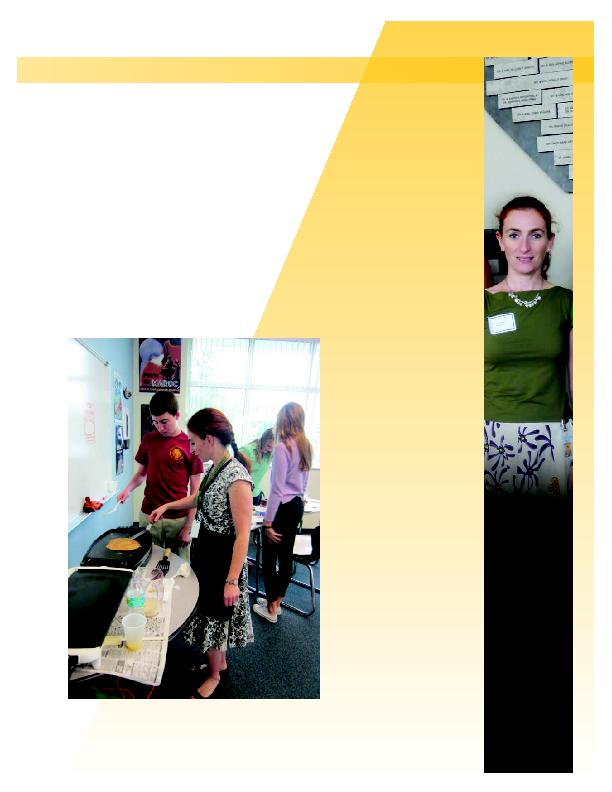
ible how much they can learn...and I have so
much more time to do things. If you want to
do something --you can do it! I said, `I want
to take my class to the Dali Museum,' and (the
response was), `Ok, you can do that.' That
would never happen at home. It would be too
complicated."
French classroom involves having students
learn about a geographic region by becoming
"travel agents."
I live, in Périgueux, in the Dordogne, in the
South-West of France. They did some research
in the library, and before that, we had done a
group a place and a type of customer. They
had to create a brochure from scratch for a
three-day weekend. They had to find a type of
accommodation and some restaurants. They
did a great job."
actually teaching her native language. "I had
never taught French before. The students say,
`You're French so this should be easy.' And I
say, `Do you know what the present perfect
tense is in English? You don't think of things
like that with your own language."
in France, Robin is amazed by the amount of
support Shorecrest provides.
classroom, my own Mac, my
own iPad. This year there are
four French Fulbrighters in the
U.S -- in Denver, Santa Monica,
Seattle, and here. I think I'm the
lucky one!"
inspiring and creative teachers
who are experts at thinking out
of the box and beyond the text-
book, our future global citizens
are in very good hands.
ABIENNE ROBIN